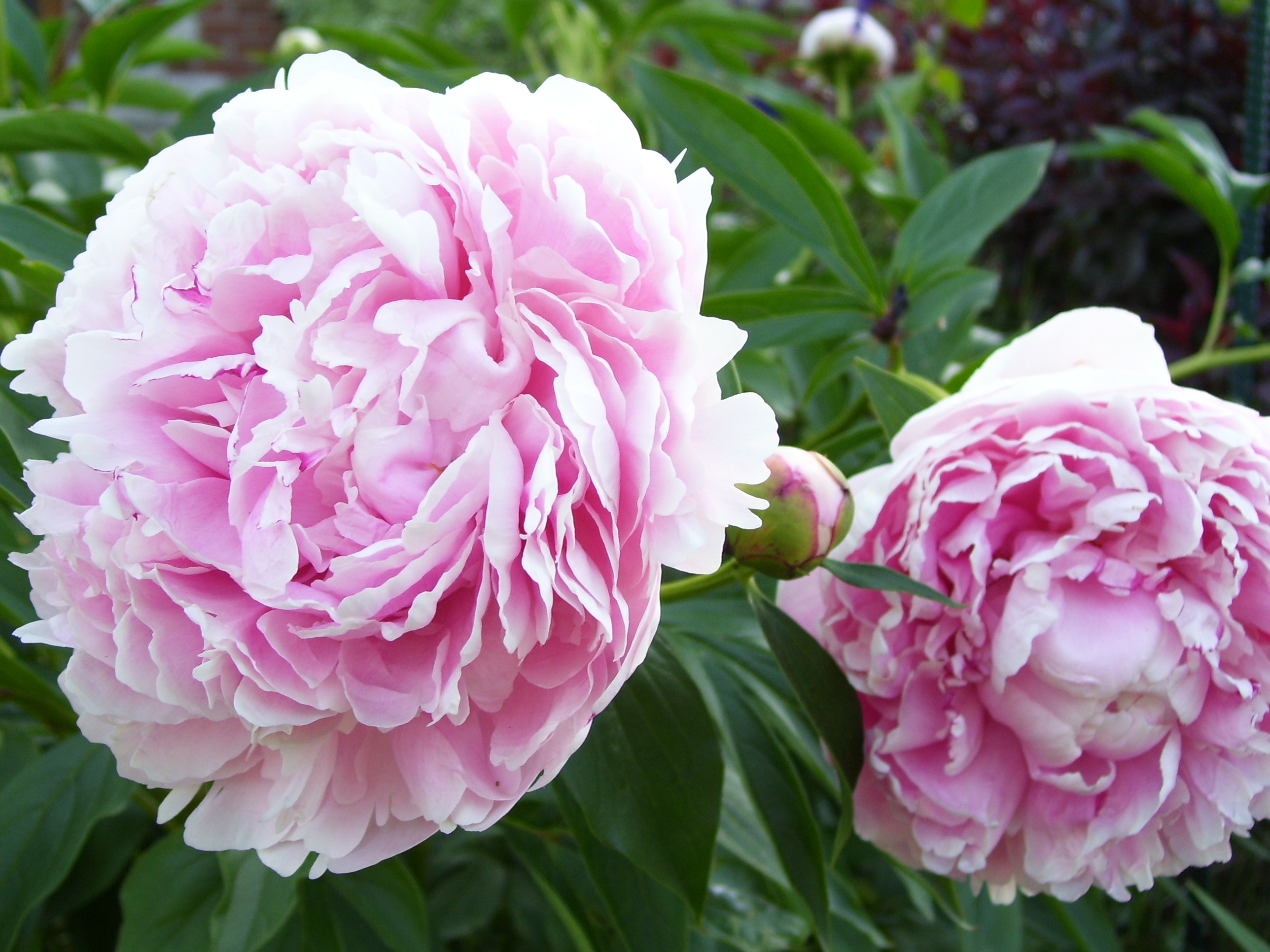|
August Heintze
(Sven) August Heintze (1881–1941) (sometimes spelled Heinze) was a Swedish botanist. Life Heintze was born on 26 September 1881 to Fredrik and Kerstin (née Svensson) Heintze in Skurup, Skåne. He had a younger sister, Anna Maria (b. 1889). He enrolled as a student at Lund University in 1901. He graduated in 1906, and earned his doctorate in 1913. His first position was as a teacher at Uddevalla kommunalgymnasium. Heintze died on 6 May 1941 in Stockholm, and is buried in the Skurups Norra Kyrkogård ("Skurup's Northern Cemetery"). He is known for his work on the classification of cormophytes, particularly the family Ranuculaceae. Selected publications Publications include: * (''Cormofyt. Fylog.'') (Abstract in German.) * Heintze, August. (1932–1935) Handbuch der Verbreitungsökologie der Pflanzen. Stockholm, Selbstverlag * Heintze, August. (1908) Växtgeografiska anteckningar från ett par färder genom Skibottendalen i Tromsö amt. ''Arkiv Bot.'' v 7 no 11 * H ... [...More Info...] [...Related Items...] OR: [Wikipedia] [Google] [Baidu] |
Skurup
Skurup is a locality and the seat of Skurup Municipality, Skåne County Skåne County ( sv, Skåne län, link=no ), sometimes referred to as Scania County in English, is the most southern county, or , of Sweden, basically corresponding to the traditional province Scania. It borders the counties of Halland, Kron ..., Sweden with 7,565 inhabitants in 2010. References Populated places in Skurup Municipality Populated places in Skåne County Municipal seats of Skåne County Swedish municipal seats {{Skåne-geo-stub ... [...More Info...] [...Related Items...] OR: [Wikipedia] [Google] [Baidu] |
Oxalidales
Oxalidales is an order of flowering plants, included within the rosid subgroup of eudicots. Compound leaves are common in Oxalidales and the majority of the species in this order have five or six sepals and petals. The following families are typically placed here:Stephens, P.F. (2001 onwards). Angiosperm Phylogeny Website. Version 9, June 2008. http://www.mobot.org/MOBOT/Research/APweb/ * Family Brunelliaceae * Family Cephalotaceae (''Cephalotus follicularis'') * Family Connaraceae * Family Cunoniaceae * Family Elaeocarpaceae * Family Huaceae * Family Oxalidaceae (wood sorrel family) The family Cephalotaceae contains a single species, a pitcher plant found in Southwest Australia. Under the Cronquist system, most of the above families were placed in the Rosales. The Oxalidaceae were placed in the Geraniales, and the Elaeocarpaceae split between the Malvales and Polygalales, in the latter case being treated as the Tremandraceae. Phylogeny The phylogeny of the Oxalidales shown ... [...More Info...] [...Related Items...] OR: [Wikipedia] [Google] [Baidu] |
Swedish Taxonomists
Swedish or ' may refer to: Anything from or related to Sweden, a country in Northern Europe. Or, specifically: * Swedish language, a North Germanic language spoken primarily in Sweden and Finland ** Swedish alphabet, the official alphabet used by the Swedish language * Swedish people or Swedes, persons with a Swedish ancestral or ethnic identity ** A national or citizen of Sweden, see demographics of Sweden The demography of Sweden is monitored by the ''Statistiska centralbyrån'' (Statistics Sweden). Sweden's population was 10,481,937 (May 2022), making it the 15th-most populous country in Europe after Czech Republic, the 10th-most populous m ... ** Culture of Sweden * Swedish cuisine See also * * Swedish Church (other) * Swedish Institute (other) * Swedish invasion (other) * Swedish Open (other) {{disambig Language and nationality disambiguation pages ... [...More Info...] [...Related Items...] OR: [Wikipedia] [Google] [Baidu] |
National Library Of Sweden
The National Library of Sweden ( sv, Kungliga biblioteket, ''KB'', meaning "the Royal Library") is Sweden's national library. It collects and preserves all domestic printed and audio-visual materials in Swedish, as well as content with Swedish association published abroad. Being a research library, it also has major collections of literature in other languages. Collections The collections of the National Library consist of more than 18 million objects, including books, posters, pictures, manuscripts, and newspapers. The audio-visual collection consists of more than 10 million hours of recorded material. The National Library is also a humanities research library, with collections of foreign literature in a wide range of subjects. The library holds a collection of 850 broadsides of Sweden dating from 1852. The National Library also purchases literature about Sweden written in foreign languages and works by Swedes published abroad, a category known as suecana. The National Lib ... [...More Info...] [...Related Items...] OR: [Wikipedia] [Google] [Baidu] |
Svensk Bot
Swedish or ' may refer to: Anything from or related to Sweden, a country in Northern Europe. Or, specifically: * Swedish language, a North Germanic language spoken primarily in Sweden and Finland ** Swedish alphabet, the official alphabet used by the Swedish language * Swedish people or Swedes, persons with a Swedish ancestral or ethnic identity ** A national or citizen of Sweden, see demographics of Sweden ** Culture of Sweden * Swedish cuisine See also * * Swedish Church (other) * Swedish Institute (other) * Swedish invasion (other) * Swedish Open (other) Swedish Open is a tennis tournament. Swedish Open may also refer to: *Swedish Open (badminton) * Swedish Open (table tennis) *Swedish Open (squash) *Swedish Open (darts) The Swedish Open is a darts tournament established in 1969, held in Malm� ... {{disambig Language and nationality disambiguation pages ... [...More Info...] [...Related Items...] OR: [Wikipedia] [Google] [Baidu] |
Ranunculaceae
Ranunculaceae (buttercup or crowfoot family; Latin "little frog", from "frog") is a family of over 2,000 known species of flowering plants in 43 genera, distributed worldwide. The largest genera are '' Ranunculus'' (600 species), '' Delphinium'' (365), '' Thalictrum'' (330), '' Clematis'' (325), and '' Aconitum'' (300). Description Ranunculaceae are mostly herbaceous annuals or perennials, but some are woody climbers (such as '' Clematis'') or shrubs (e.g. '' Xanthorhiza''). Most members of the family have bisexual flowers which can be showy or inconspicuous. Flowers are solitary, but are also found aggregated in cymes, panicles, or spikes. The flowers are usually radially symmetrical but are also found to be bilaterally symmetrical in the genera '' Aconitum'' and '' Delphinium''. The sepals, petals, stamens and carpels are all generally free (not fused), the outer flower segments typically number four or five. The outer stamens may be modified to produce only nectar ... [...More Info...] [...Related Items...] OR: [Wikipedia] [Google] [Baidu] |
Psilotophyta
Ophioglossidae is one of the four subclasses of Polypodiopsida (ferns). This subclass consists of the ferns commonly known as whisk ferns, grape ferns, adder's-tongues and moonworts. It is equivalent to the class Psilotopsida in previous treatments, including Smith ''et al.'' (2006). The subclass contains two orders, Psilotales and Ophioglossales, whose relationship was only confirmed by molecular phylogenetic studies. Taxonomy Smith et al. (2006) carried out the first higher-level pteridophyte classification published in the molecular phylogenetic era, and considered the ferns (monilophytes), with four classes. They placed the whisk ferns and related taxa in the class Psilotopsida, with two orders. Mark W. Chase and James L. Reveal (2009) classified them as two separate subclasses, Psilotidae and Ophioglossidae, corresponding to those orders within a much broader grouping, the class Equisetopsida ''sensu lato''. Christenhusz ''et al.'', 2011, included both the Ophioglossal ... [...More Info...] [...Related Items...] OR: [Wikipedia] [Google] [Baidu] |
Paeoniales
The peony or paeony is a flowering plant in the genus ''Paeonia'' , the only genus in the family Paeoniaceae . Peonies are native to Asia, Europe and Western North America. Scientists differ on the number of species that can be distinguished, ranging from 25 to 40, although the current consensus is 33 known species. The relationships between the species need to be further clarified. Most are herbaceous perennial plants tall, but some are woody shrubs tall. They have compound, deeply lobed leaves and large, often fragrant flowers, in colors ranging from purple and pink to red, white or yellow, in late spring and early summer. The flowers have a short blooming season, usually only 7–10 days. Peonies are popular garden plants in temperate regions. Herbaceous peonies are also sold as cut flowers on a large scale, although generally only available in late spring and early summer. Description Morphology All Paeoniaceae are herbaceous perennials or deciduous shrubs, with t ... [...More Info...] [...Related Items...] OR: [Wikipedia] [Google] [Baidu] |


